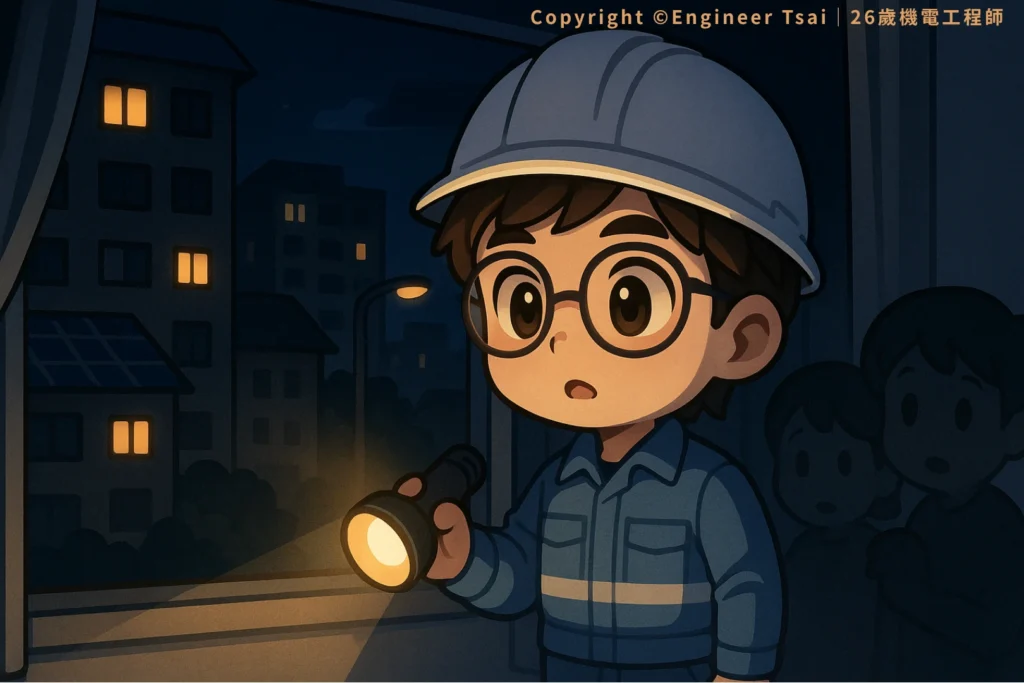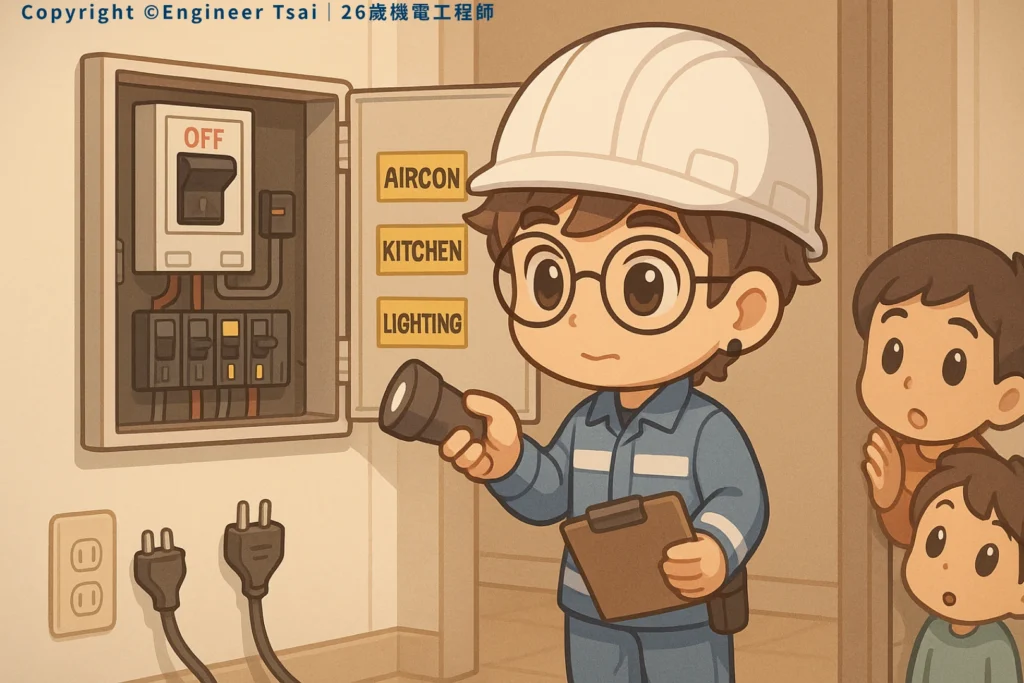Do you remember the last time your house suddenly lose power?
Maybe you were about to head to bed, or it was a weekend get-together with friends—the microwave and slow cooker both running—and then bam, everything went dark.
Most people freeze up for a second and think, “Wait… what now? Do I need to call someone, or is this a big problem?”
But here’s the real difference-maker:
It’s not about whether you have an electrician on speed dial.
What really matters is—do you know the basic steps to check what’s causing the outage?
If you want to be the person in your home who handles these surprises calmly—and earns everyone’s trust when it counts—keep reading.
1. When the Lights Go Out: You’re Not Alone
Power outages happen to everyone.
It doesn’t matter how new or old your place is, or how much you paid for it—eventually, a blackout is going to hit. And trust me, you’re not the only one who feels a little panicked when it happens.
Ask around: just about every friend, coworker, or neighbor has a story about lose power and not knowing what to do next.
That’s why, when you know how to check things yourself—and help your family stay calm—you’re not just the “fixer,” you become the person everyone counts on in a crisis.

2. The Most Important First Step: Is It Just Your House, or Is Everyone Out?
Don’t waste your energy tearing into your breaker box right away!
The real first step is simple: check what’s happening outside.
Here’s how:
- Glance out the window. Are the neighbors’ lights on? What about the hallway, the streetlights, or the elevator if you’re in an apartment?
If everyone is in the dark, it’s probably a neighborhood outage or an issue with the power company. No need to mess with your own equipment—just wait for the utility crew to handle it.
But if it’s just your house? Now it’s time for a little home troubleshooting.
Actionable insight:
Stop scaring yourself—knowing whether it’s just you or the whole block can save you a ton of stress (and pointless work).
3. Back Inside: Open Up Your Electrical Panel and Check the Breakers
Step 1: Find your panel, know your breakers
In most American homes, your breaker panel is in the garage, basement, utility room, or sometimes outside. Inside, you’ll see a row of smaller circuit breakers and one big “main breaker.”
Step 2: Check which breaker tripped
- Main breaker tripped (entire house is dark): Usually means you’re drawing more power than your system can handle, or there’s a serious short circuit.
- Individual breaker tripped (just part of the house is out): Typically means too many appliances were running in that zone (like kitchen or bathroom), or a single device shorted out.
Step 3: Practical check
- Look for any breaker that’s in the middle position or flipped all the way down (OFF).
- If it’s an individual breaker, note which one it is and think about what was running in that area right before the power went out.
Actionable insight:
Every time you check your panel, take a minute to label what each breaker controls. Next time something happens, you—or anyone in your family—will know exactly where to look.
4. Don’t Rush to Flip Everything Back On—Find the Real Cause
Here’s a common mistake:
As soon as someone spots a tripped breaker, they flip it right back on. But if the problem isn’t fixed, it just trips again—and now everyone’s more stressed.
Why does this happen?
There’s usually an unresolved issue behind every outage. The most common reasons are:
- Too many high-powered appliances running at once
(Think: microwave, slow cooker, and coffee maker all on the same circuit—boom, overload.) - A device is shorting out
Old appliances, wet outlets, or damaged cords are usual suspects. - Loose outlets or wiring
This one’s even riskier—a loose connection can not only cause repeated outages but also start a fire.
The right way to troubleshoot:
- First, turn off or unplug all suspect appliances in the affected area.
- Then, reset the tripped breaker.
- Plug devices back in one by one, watching for which one causes the breaker to trip again.
Actionable insight:
“When the power goes out, unplug first—then reset the breaker.” This quick move helps you spot the culprit fast and prevents endless cycles of tripping and frustration.

5. What If the Breaker Keeps Tripping? Here’s Your Golden Rule
Here’s the golden rule:
If you reset a breaker and it immediately trips again—or if it still trips even after you’ve unplugged everything on that circuit—stop right there.
That’s a red flag for a serious issue: maybe a shorted wire, old wiring, or water somewhere it shouldn’t be.
This is the time to call in a licensed electrician.
It’s not just about protecting yourself; it’s about keeping your whole family safe.
6. Labeling Your Breakers: A Simple Move for Every Family
Has this ever happened to you?
Someone calls you at home: “Which breaker is for the kitchen? What about the AC?”
Don’t wait until you’re in the dark—grab some sticky labels or a label maker and clearly mark every breaker while the power’s working. When something goes wrong, everyone in the house can respond with confidence.
7. Your Power-Outage Troubleshooting Checklist (Copy, Save, Share!)
- Look outside: Is it just your house or the whole block?
- Open your breaker panel: Check the main and all the branch breakers.
- If a branch breaker tripped, turn off and unplug everything on that circuit.
- Flip the breaker back to ON.
- Plug appliances back in one by one—find the culprit!
- Label each breaker for next time.
- If the breaker keeps tripping, call a pro right away.
8. Quick Cost Guide: Should You DIY or Call a Pro?
- Replacement breaker (branch/main): Usually $5–$30 (per breaker)
- Electrician home service call: $100–$300+ (depends on location and complexity)
Pro-tip:
If you can fix it safely, great. But if there’s any doubt, don’t risk it—get a pro involved.
9. Wrapping Up: From Power Panic to Home Confidence
Everybody faces lose power at some point.
Will you freeze and wait for help, or step up as your family’s “power guardian”?
Mastering this basic troubleshooting routine is your first step toward home confidence. Next time the lights go out, let the panic stay in the past—and bring some real action to your home.
📌 Further Reading:
- [Home Electrical Safety: Turning Off Your Main Breaker Made Simple]
- [Common Multimeter Mistakes and How to Avoid Them]
- [Beginner’s Guide: Five Electrical Tools That Make Home Maintenance Easy]
What kind of lose power issues do you run into most? Which step is trickiest for you?
Drop your story in the comments, or follow me for more real-life electrical tips—next up: how to figure out exactly which appliance in your house is causing the problem!


